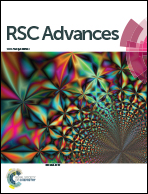Biology-oriented development of novel lipophilic antioxidants with neuroprotective activity
Abstract
Hydroxycinnamic derivatives based on ferulic and caffeic acids were designed to meet the pharmacokinetic requirements to cross the blood–brain barrier and to display neuroprotective activity within the central nervous system. Biological screening included the assessment of acetylcholinesterase and glycogen synthase kinase 3β inhibition, iron chelation properties, in vitro blood–brain barrier permeability, evaluation of cytotoxicity and neuroprotection against 6-hydroxydopamine induced damage in SH-SY5Y cells. Although the chemical modifications did not significantly alter the in vitro activity of the parent compounds, the results of the PAMPA-BBB assay show that some derivatives have higher diffusion rates and may reach the brain. The majority of the synthesized compounds did not display cytotoxicity and successfully prevent 6-hydroxydopamine damage. In this series, compound 14 stands out as a promising neuroprotective agent combining a number of key features: iron chelation, neuroprotection against oxidative damage, mild acetylcholinesterase activity and ability to permeate the blood–brain barrier. This biology-oriented approach provides new tools for the generation of new chemical entities to tackle the oxidative damage associated with neurodegenerative disorders.


 Please wait while we load your content...
Please wait while we load your content...